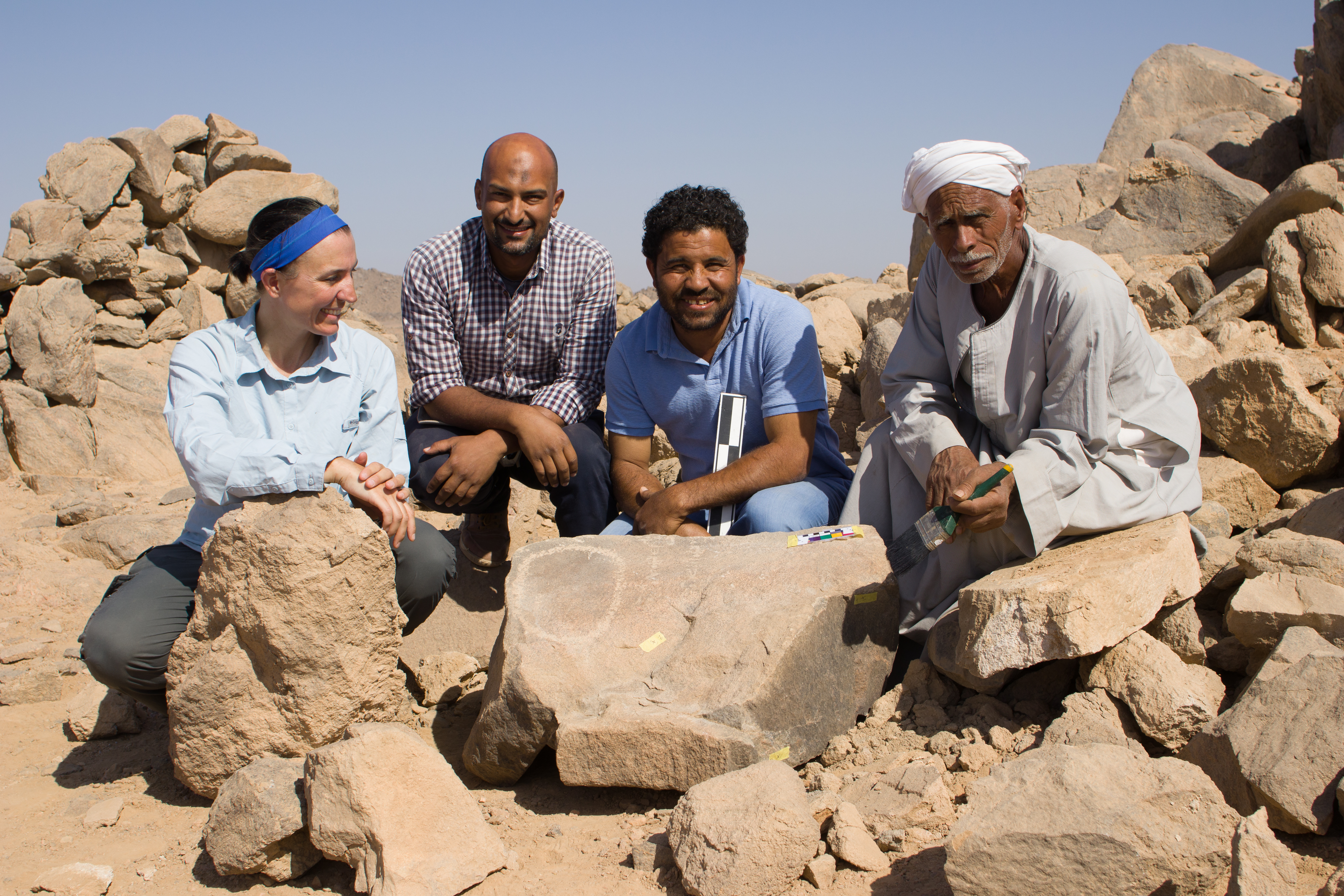- EraPaleolithic to Modern, with emphasis on Middle Kingdom and Ptolemaic-Early Roman
- Project DirectorKate Liszka, Meredith Brand, and Bryan Kraemer
- LocationEastern Desert
- AffiliationCalifornia State University San BernardinoAmerican University in Cairo
- Project SponsorCalifornia State University San Bernardino (2016-present)Antiquities Endowment Fund & Princeton University (2014-2015)
- Project Dates2014- Present
Wadi el-Hudi is a geologically rich region in the Eastern Desert, east of Aswan. From the Paleolithic period until today, people have travelled to this part of the Eastern Desert to mine precious minerals, especially amethyst and later gold. Small groups of miners and prospectors travelled to the desert mines throughout much of Egyptian history. During the Middle Kingdom and the Ptolemaic to Early Roman Period especially, large scale, state-sponsored expeditions led hundreds or thousands of workers into the desert to mine for amethyst. These expeditions left dozens of archaeological settlements, camps, and mines in the desert. Expeditions of the Middle Kingdom also carved and erected over 280 inscriptions that document the large project as well as the roles of individual members of the expeditions. Evidence from Wadi el-Hudi provides extensive insights into the organization and supply of expeditions by the ancient administrations, mining, labor, and industry practices of precious mineral acquisition, daily life in a desert community, and protection and surveillance of the missions by soldiers in the desert.
Wadi el-Hudi was first recorded by Ahmed Fakhry in 1952. At that time, he recorded over 150 inscriptions and 14 archaeological sites from the region, but the majority of his work photographed the inscriptions. In 1992, Ian Shaw and Robert Jameson briefly recorded some of the Middle Kingdom settlements, especially Sites 5 and 9. In 1993, Rosemarie and Dietrich Klemm recorded the Islamic gold mines at Sites 3 and 14. However, all of these preliminary missions to Wadi el-Hudi were unable to study the region for more than a few days or weeks.
In 2014, the Wadi el-Hudi Expedition began recording and studying the larger region and have returned almost yearly to the desert. Four goals have been at the heart of their work: mapping standing architecture, conducting archaeological survey of the larger region, performing preliminary excavations, as well as conserving and protecting the archaeology. This archaeological work has often been in a race against modern destruction both from legal and illegal mining operations in the desert. Every season, the Wadi el-Hudi team records as much as possible, sometimes mapping a site, only to see it destroyed before the next season. Nonetheless, they have discovered so much more in the desert. Every season, they discover new inscriptions, new archaeological sites, and new information about the past. Their team works closely with the Aswan Inspectorate to study material in the desert and to bring archaeological materials to the Aswan Magazine for further in-depth study. They are very pleased to work closely with the Ministry of Antiquities and Tourism as well as the Aswan Inspectorate.
For more information, please visit the Wadi el-Hudi Expedition website
Core Team Members:
- Kate Liszka
- Bryan Kraemer
- Meredith Brand
- Omer Farouk
- Magdalena Włordarska
- Brooke Norton
- Amy Wilson
Many thanks to the numerous others who have contributed to our research over the years.
